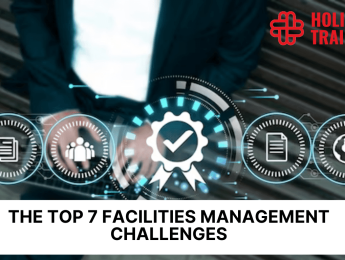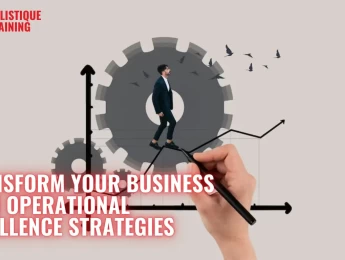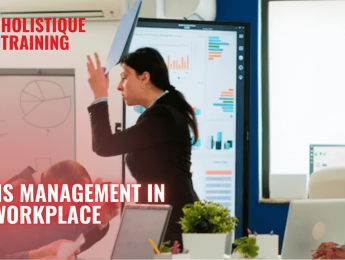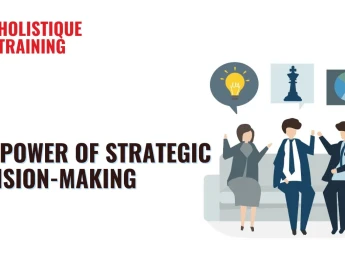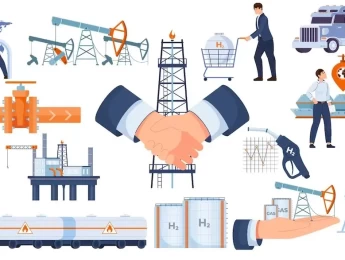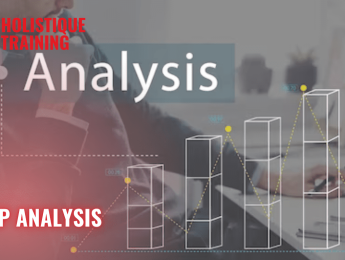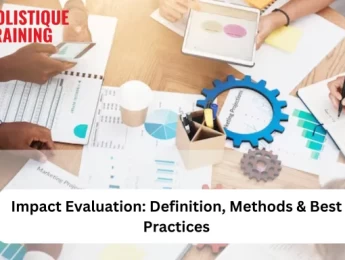- Table of Contents
- Introduction
- Elevating Facilities Management through Employee-Centric Design
- Creating Employee-Centric Workplaces
- The Top 7 Facilities Management Challenges
- 1. Rapid Technological Advancements
- 2. Space Utilisation and Flexibility
- 3. Sustainability and Energy Efficiency
- 4. Health and Safety Compliance
- 5. Vendor Management and Outsourcing
- 6. Budget Constraints
- 7. Workforce Expectations
- Strategies to Navigate Facilities Management Challenges
- 1. Continuous Learning and Training
- 2. Adaptive Space Design
- 3. Data-Driven Decision-Making
- 4. Collaborative Partnerships
- 5. Innovative Financing
- 6. Employee-Centric Approach
- 7. Compliance Monitoring
- The Future of Facilities Management
- Smart Buildings and IoT Integration
- Personalised Workspaces
- Virtual and Augmented Reality
- Predictive Maintenance
- Sustainable Innovation
- Wellness-Centric Design
- Conclusion
Introduction
In today's rapidly evolving business landscape, the role of facilities management has expanded beyond mere infrastructure upkeep and maintenance. Organisations are now realising that a well-managed and employee-centric workplace plays a pivotal role in productivity, employee satisfaction, and overall business success. In this blog post, we'll delve into the crucial concept of reimagining facilities management with a focus on employees, discuss the top 7 challenges that modern facilities managers face, and explore effective strategies to overcome these hurdles. Additionally, we'll peer into the future of facilities management and how it's set to transform in the years ahead.
Elevating Facilities Management through Employee-Centric Design
In the traditional model of facilities management, the emphasis was largely on maintaining physical assets and ensuring operational efficiency. However, as the workforce becomes more diverse and remote, and as the lines between work and life blur, it's crucial to prioritise the well-being and experience of employees within the workplace. Modern facilities management should embrace a holistic approach that fosters collaboration, creativity, and employee engagement.
Creating Employee-Centric Workplaces
Designing workplaces that cater to employees' physical, mental, and emotional needs is paramount. Organisations can create an environment that attracts and retains top talent by implementing the following:
- Flexible Workspaces: In the modern workplace, flexibility is paramount. Employees require spaces that can adapt to their diverse needs, whether they're collaborating on a project, focusing on a task, or simply seeking a change of scenery. These flexible workspaces can foster creativity and innovation by allowing employees to choose environments that best suit their current work requirements. It's also essential to consider factors like noise levels, lighting, and privacy options when designing these spaces to ensure they genuinely enhance productivity.
- Ergonomic Furniture:Ergonomics goes beyond comfortable chairs and desks. Facilities managers should explore ergonomic solutions that address the specific needs of various employees. This may include adjustable standing desks, ergonomic accessories like keyboard trays and monitor arms, and even tools for remote workers to maintain proper posture and well-being while working from home. Creating a culture of ergonomic awareness can significantly reduce workplace injuries and improve employee health.
- Wellness Programmes:Workplace wellness initiatives encompass physical, mental, and emotional well-being. Beyond the traditional gym memberships, consider offering stress management workshops, mental health resources, and ergonomic assessments. Facilities managers can play a vital role in ensuring that the physical environment supports these wellness programmes, such as providing designated spaces for relaxation, mindfulness, or even nap pods to combat fatigue.
- Green Initiatives: Sustainability initiatives can be deeply ingrained in the workplace's design. Beyond energy-efficient lighting and recycling bins, consider integrating elements like green walls, indoor plants, and natural lighting sources. These biophilic design elements not only contribute to a healthier environment but also have been shown to boost productivity and overall well-being. Additionally, facilities managers can explore initiatives like waste reduction, composting programmes, and sustainable transportation options to align with the organisation's sustainability goals.
The Top 7 Facilities Management Challenges
With the foundation laid for a workplace that values employees' well-being, let's now delve into the critical landscape of modern facilities management and the seven key challenges that necessitate innovative solutions.
1. Rapid Technological Advancements
The integration of smart technologies,Internet of Things (IoT) devices, and data analytics into facilities management has ushered in an era of unprecedented efficiency and insights. However, this rapid evolution comes with its own set of challenges. Facilities managers must not only keep up with the latest technological trends but also ensure that the adoption of these technologies aligns seamlessly with existing infrastructure. The task of integrating new systems while maintaining day-to-day operations requires a delicate balancing act. Furthermore, the need to address potential cybersecurity threats and data privacy concerns adds an extra layer of complexity to this challenge.
2. Space Utilisation and Flexibility
The shift towards remote work and flexible schedules has transformed the traditional office landscape. Facilities managers now find themselves grappling with the task of reimagining physical spaces to accommodate a more fluid workforce. Creating an environment that balances the need for collaborative workspaces with areas for focused tasks is an intricate puzzle. Moreover, designing spaces that can quickly adapt to evolving needs and technologies is an ongoing challenge. This challenge extends beyond just the layout, encompassing considerations of office density, ergonomics, and the seamless integration of technology to facilitate flexible work arrangements.
3. Sustainability and Energy Efficiency
As environmental concerns grow, facilities managers are increasingly tasked with implementing sustainable practices within the workplace. While this is a noble endeavour, it comes with multifaceted challenges. Facilities managers must navigate the complex world of energy-efficient systems, eco-friendly construction materials, and waste management strategies. Striking the right balance between cost-effective sustainable solutions and immediate financial constraints requires careful planning and informed decision-making. Additionally, staying abreast of evolving sustainability regulations and standards is a constant endeavour.
4. Health and Safety Compliance
The global health crisis has accentuated the importance of health and safety within the workplace. Facilities managers now face the monumental task of ensuring that their facilities adhere to ever-changing health and safety regulations. Implementing effective sanitation measures, maintaining proper ventilation systems, and providing resources for employee well-being are now paramount concerns. The challenge lies not just in implementing these measures but also in consistently monitoring and adapting to evolving health guidelines to keep the workplace safe and reassuring for employees.
5. Vendor Management and Outsourcing
Outsourcing various facility management services, such as cleaning, maintenance, and security, is a common practice among organisations. However, managing these vendor relationships poses a significant challenge. Facilities managers must not only ensure the quality and reliability of services but also align these services with the broader goals and vision of the organisation. Maintaining clear lines of communication, managing contracts effectively, and resolving disputes are all part of the complex vendor management process.
6. Budget Constraints
Facilities management initiatives often require substantial financial investment. This poses a constant challenge, particularly when organisations face budget constraints. Facilities managers must be resourceful and creative in finding ways to fund essential projects without compromising the quality of the workplace. This might involve exploring alternative financing models, prioritising projects that yield the most significant returns on investment, or finding cost-effective solutions to meet the evolving needs of employees.
7. Workforce Expectations
Today's workforce has elevated expectations when it comes to their workplace environment. Beyond the basics of a desk and a computer, employees now expect amenities that promote well-being, convenience, and work-life balance. Facilities managers must navigate this landscape by understanding and fulfilling these expectations, all while maintaining operational efficiency. Balancing the need for communal spaces, wellness areas, and on-site amenities with the organisation's budget and goals can be a complex juggling act.
In summary, modern facilities managers operate in a dynamic and multifaceted landscape where they must continuously adapt to technological, regulatory, and workforce changes. Overcoming these seven key challenges requires a combination of strategic thinking, collaboration, and innovation to create workplaces that are not only efficient but also conducive to employee well-being and satisfaction.
Strategies to Navigate Facilities Management Challenges
As the landscape of facilities management continues to evolve, addressing the top challenges requires a strategic approach that combines innovation, adaptability, and collaboration. Let's explore in-depth how facilities managers can overcome these hurdles and pave the way for a more efficient and employee-centric workplace.
1. Continuous Learning and Training
In the face of rapid technological advancements, the importance of continuous learning and training cannot be overstated. Facilities managers should not view training as a one-time event but as an ongoing commitment. Staying updated on emerging technologies, industry trends, and best practices ensures that managers are well-equipped to integrate new solutions seamlessly. This commitment to learning extends beyond technical skills; it also includes staying informed about changes in regulations, compliance requirements, and safety standards.
Furthermore, investing in training not only enhances individual expertise but also benefits the organisation as a whole. A workforce of well-trained facilities managers is more adept at optimising operations, reducing costs, and minimising risks. Embracing a culture of learning and professional development can lead to a more agile and innovative approach to facilities management.
2. Adaptive Space Design
The challenge of space utilisation and flexibility requires a holistic approach to workplace design. Facilities managers should collaborate closely with interior designers, architects, and workplace strategists to create multifunctional spaces that can be easily reconfigured to suit evolving needs. However, this goes beyond mere physical layout considerations.
Adaptive space design involves understanding how employees work and interact within the space. This means conducting surveys and data analysis to identify work patterns and preferences. Are employees more productive in open collaborative areas or quiet zones? Are there peak times for certain spaces? Using this data, facilities managers can tailor the environment to enhance productivity, collaboration, and well-being. Additionally, incorporating feedback mechanisms allows for continuous improvement and ensures that the workspace remains aligned with employee needs.
3. Data-Driven Decision-Making
Data analytics is becoming increasingly crucial in facilities management. Collecting and analysing data on space utilisation, energy consumption, maintenance schedules, and workplace feedback empowers facilities managers to make informed decisions. Beyond gathering data, the ability to interpret and act on it is essential.
For instance, data can reveal trends in space utilisation, highlighting underused areas that can be repurposed for better efficiency. Energy consumption data can identify opportunities to implement energy-saving measures and reduce costs. Maintenance data can be used to prioritise tasks and allocate resources efficiently. Moreover, data-driven decision-making can lead to a more personalised workplace experience. By analysing data on employee preferences, facilities managers can tailor the workspace to individual needs, ultimately boosting job satisfaction and productivity.
Table 1: Benefits of Data-Driven Decision-Making
Benefits | Description |
Improved Efficiency | Data-driven decisions lead to streamlined operations, reducing wastage of time and resources. |
Enhanced Employee Experience | Data can be used to tailor the workplace to individual preferences, boosting job satisfaction. |
Cost Reduction | Identifying areas where resources can be optimised helps in cost-saving. |
4. Collaborative Partnerships
Managing vendor relationships and outsourcing services is a multifaceted challenge. Facilities managers should establish strong, collaborative partnerships with third-party vendors and service providers. Open lines of communication are paramount. Regular meetings, feedback sessions, and joint planning efforts create a sense of unity and shared goals.
Alignment with the organisation's mission and objectives is also essential. Facilities managers should ensure that vendors' services align with the broader goals of the organisation, whether those are sustainability targets, cost-effectiveness, or quality standards. Collaborative partnerships extend beyond transactional interactions; they foster a culture of continuous improvement, innovation, and mutual support.
5. Innovative Financing
Budget constraints are a perennial challenge in facilities management. Innovative financing models offer a way to overcome this hurdle. For instance,performance-based contracts tie vendor payments to specific outcomes, incentivising vendors to deliver high-quality services. Shared savings agreements allow organisations to reinvest cost savings from efficiency improvements into workplace enhancements.
Another innovative financing approach involves leveraging energy savings. By implementing energy-efficient systems and practices, facilities managers can reduce operational costs and allocate the savings toward sustainability initiatives. This not only addresses budget constraints but also aligns with the growing emphasis on environmentally responsible practices, contributing to the organisation's overall mission and image.
6. Employee-Centric Approach
To meet workforce expectations, facilities managers must adopt an employee-centric approach. Engaging with employees through surveys, focus groups, and feedback mechanisms is essential. This engagement allows facilities managers to understand employees' evolving needs and preferences. It also fosters a sense of ownership and involvement in shaping the workplace.
Moreover, the employee-centric approach goes beyond physical amenities. It encompasses the entire employee experience, including factors like workplace culture, diversity and inclusion efforts, and opportunities for personal and professional growth. Facilities managers can collaborate with HR departments to align workplace design with talent retention and attraction strategies. By actively involving employees in shaping their work environment, facilities managers create a workplace that enhances job satisfaction, productivity, and overall well-being.
7. Compliance Monitoring
The challenge of ensuring health and safety compliance in the workplace requires a proactive approach. Establishing a robustcompliance monitoring system involves regular inspections, audits, and assessments. These measures not only ensure adherence to regulations but also contribute to a culture of safety.
Facilities managers should go beyond mere compliance checkboxes and strive for a culture of continuous improvement. Regular safety training, emergency response drills, and feedback loops for incident reporting can enhance the overall safety culture in the workplace. Investing in modern safety technologies, such as advanced security systems and environmental monitoring sensors, can further enhance the ability to maintain safety standards effectively.
In summary, navigating facilities management challenges requires a multifaceted approach that combines continuous learning, adaptive design, data-driven insights, collaborative partnerships, innovative financing, employee engagement, and a commitment to safety and compliance. By addressing these challenges strategically, facilities managers can create workplaces that are not only efficient but also responsive to the dynamic needs of the workforce, ultimately contributing to organisational success.
The Future of Facilities Management
The future of facilities management promises exciting advancements driven by technology and changing workplace dynamics.
Smart Buildings and IoT Integration
The future of facilities management will be heavily influenced by the proliferation of smart buildings and seamless integration with the Internet of Things (IoT). Buildings will evolve into sophisticated entities with interconnected sensors and devices that monitor everything from occupancy levels to air quality. Real-time data from these sensors will enable facilities managers to make informed decisions about energy usage, space utilisation, and resource allocation. For example, if a section of the office is consistently underutilised, the building's HVAC system can automatically adjust to save energy, reducing operational costs and environmental impact.
Moreover, IoT-enabled buildings will facilitate predictive maintenance. Sensors can detect equipment wear and tear, enabling proactive maintenance before a critical failure occurs. This predictive approach minimises downtime, improves operational efficiency, and extends the lifespan of assets. Facilities managers will increasingly rely on data analytics and machine learning algorithms to interpret the vast amount of data generated by smart buildings, making their roles more data-driven and strategic.
Personalised Workspaces
Artificial intelligence (AI) will play a central role in shaping the future of workspaces. AI-driven systems will empower employees to personalise their work environments to an unprecedented degree. Employees will have the ability to control factors like lighting, temperature, and desk height through smartphone apps or voice-activated assistants. This level of customisation will enhance individual comfort and productivity while providing employees with a sense of autonomy over their workspace.
AI will also contribute to improved space utilisation. Sensors can track employee movements within the office, allowing facilities managers to optimise space allocation further. For instance, if certain meeting rooms are consistently underused, AI algorithms can suggest converting them into productive workspaces, meeting the evolving needs of the workforce.
Table 2: How the future of facilities management will look like
Virtual and Augmented Reality
Virtual reality (VR) and augmented reality (AR) will revolutionise facilities management in various ways. VR will enable remote facility inspections, training, and walkthroughs. Facilities managers can conduct virtual inspections of distant sites, reducing travel time and costs. Training programmes can be enhanced with immersive VR experiences, providing a more engaging and effective learning environment for staff.
On the other hand, AR will be invaluable for maintenance tasks. Technicians can wear AR headsets that provide real-time visual guidance and information, simplifying complex repair processes. This technology can reduce human errors, enhance safety, and expedite maintenance, ensuring the workplace runs smoothly and efficiently.
Predictive Maintenance
Advanced data analytics will empower facilities managers to adopt predictive maintenance strategies. By harnessing historical data and real-time sensor information, managers can anticipate equipment failures and maintenance needs. For example, if data indicates that an HVAC unit's performance is degrading, facilities managers can schedule maintenance before it breaks down. Predictive maintenance minimises downtime, reduces repair costs, and ensures the uninterrupted operation of critical systems.
Sustainable Innovation
Sustainability will remain at the forefront of facilities management in the future. With a growing emphasis on environmental responsibility, facilities managers will continue to explore innovative ways to reduce the carbon footprint of their workplaces. This will include the integration of renewable energy sources, such as solar panels and wind turbines, to power buildings. Circular design principles will promote the reuse and recycling of materials, reducing waste and environmental impact. Eco-friendly construction materials will become more commonplace, contributing to greener building practices.
Wellness-Centric Design
The future workplace will place a greater emphasis on wellness-centric design. Biophilic design principles, which integrate nature into the built environment, will become more prevalent. Offices will feature indoor gardens, green walls, and natural lighting to enhance employee well-being. These elements have been shown to reduce stress, improve air quality, and boost creativity and productivity. Facilities managers will collaborate closely with architects and designers to create environments that prioritise the physical and mental health of employees.
In short, the future of facilities management is a dynamic landscape where technology, sustainability, and employee well-being converge. Smart buildings, AI-driven customisation, virtual and augmented reality, predictive maintenance, sustainable practices, and wellness-centric design will shape the workplaces of tomorrow. Facilities managers who embrace these innovations will not only optimise operational efficiency but also contribute to creating environments that foster creativity, innovation, and employee satisfaction in the workplace of the future.
Conclusion
As organisations recognise the integral role of facilities management in creating productive, employee-focused workplaces, the challenges faced by facilities managers become paramount. By embracing technology, fostering collaboration, and staying attuned to evolving employee needs, these challenges can be transformed into opportunities for innovation and growth. The future of facilities management holds immense promise, offering a path toward workplaces that prioritise well-being, efficiency, and sustainability. Through strategic adaptation and a commitment to employee-centric design, facilities management is poised to shape the future of work for the better.
In wrapping up our journey through the realms of redefining facilities management, we encourage you to seize the opportunity for further enrichment by enrolling in our specialised course: ‘Sustainable Facilities Management.’ Delve deeper into the strategies, techniques, and best practices discussed here, and gain practical insights that will empower you to navigate challenges, champion innovation, and spearhead the evolution of workplaces that seamlessly integrate sustainability, efficiency, and employee-centric design.


